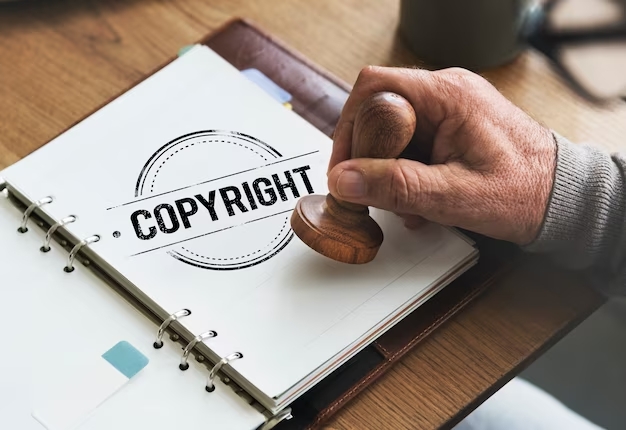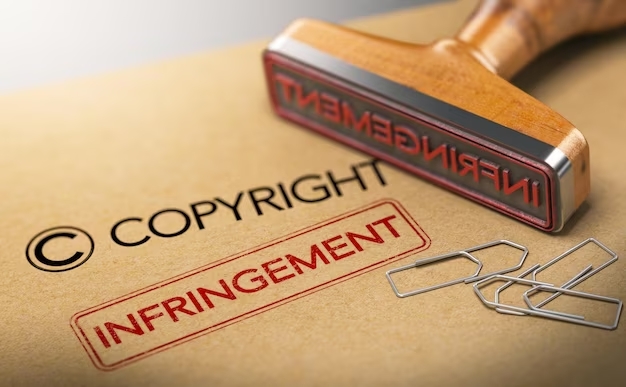Copyright: Safeguarding Original Works of Authorship
When you create an original work and give it a tangible form, you automatically become the author and owner of that work. Copyright grants you the exclusive right to control and authorize others to use your work, within certain legal boundaries. At our organization, our experts specialize in assisting individuals in registering their copyrights to ensure the protection of their original creations.
Eligible Works for Copyright Protection:
- Multimedia presentations
- Visual media
- Interactive media
- Digital artworks
- Cinematic experiences
- Theatrical productions
How Y/our Lawyer helps in Copyright Authorization ?
Our consultant will discuss the issue over a 24X7 helpline .
Step 1
Our consultant will discuss the issue over a 24X7 helpline .
Step 1
A detailed analysis of your case will be done by an experienced lawyer.
Step 2
You will be able to track your case with a personal account
Step 3
Overview
In essence, copyright can be defined as the privilege to prevent the replication of someone else’s work. The copyright owner is granted an exclusive right to safeguard their creation. By registering the copyright, the author’s work is shielded against imitation, duplication, or reproduction in alternative formats. This article comprehensively outlines the eligibility criteria for copyright registration, along with the various categories covered by the Copyright Act. Furthermore, it elaborates on the detailed procedure of copyright registration and highlights the advantages of obtaining such registration.

Copyright-Eligible Artistic Forms

The ‘Copyright Act, 1957’ serves as the foundation for copyright protection. However, the Act underwent a significant amendment in 2012, commonly known as ‘The Copyright Act 2012’. The Register of Copyrights encompasses the following categories:
- Original Literary works (excluding computer programs)
- Musical works
- Artistic works, including books, paintings, and sculptures
- Cinematography, encompassing visual recordings
- Sound recordings
- Compilations, tables, and computer programs.
Requisite Of Documents For Copyright Registration
To secure copyright registration, the following documentation is necessary:
- Applicant’s personal information, including name, address, nationality, and valid identification proof.
- If the work is published and the applicant and publisher are distinct individuals, a No Objection Certificate (NOC) from the publisher is required.
- In case of any existing trademarks related to the work, a Search Certificate from the Trademark Office is necessary.
- Vakalatnama or Power of Attorney, granting legal authorization for copyright registration.
- Two copies of the work being copyrighted.
- Applicant’s Know Your Customer (KYC) form, providing relevant information and verification.

Copyright Registration Process
Copyright protection is applicable to both published and unpublished works. To register published work, three copies of the work must be submitted along with the registration application. For unpublished work, only a manuscript copy needs to be attached, and the stamp of the copyright office serves as proof of registration.
In India, the copyright registration process involves several steps, outlined below:
Completing the Application: Apply for copyright registration by filling out Form IV in the prescribed format available on the official website. Pay the applicable fees and provide all the necessary details and particulars. Separate applications are required for different works.
Application Fees: Refer to the fee structure provided to determine the applicable fees for different types of copyright works.
Signing the Application: Both the applicant and the advocate must sign the application form. The advocate should hold a valid vakalatnam or Power of Attorney (POA) executed in their favor.
Diary Number Issuance: Upon payment of the fees, the Registrar will issue a diary number. A waiting period of 30 days is allotted in case any objections are raised against the work.
Application Scrutiny: The application is scrutinized by the Copyright Office for any discrepancies or objections within the 30-day waiting period. If no objections are received or discrepancies are found, the application is registered. An extract of the registration is sent to the Registrar for entry into the Register of Copyright.
Objection Handling: If any objections are raised by another party during the waiting period, the examiner sends a letter to both parties, providing an opportunity for a hearing.
Examination and Approval: After hearing both parties, the examiner examines the application and approves or rejects it based on the case and resolution of objections, if any.
By following this comprehensive process, applicants can navigate the copyright registration procedure and seek protection for their creative works.
Advantages of Copyright Protection
Copyright registration offers a range of interconnected advantages to the owner of the copyright. While these benefits are intertwined, the following key points provide a clear understanding of their significance.
Creating a Public Record: By registering copyright, a public record is established, signaling that the author holds exclusive rights to their work. This registration serves as a declaration to the public that the work is protected, preventing unauthorized copying or reproduction without permission.
Power for Filing Copyright Infringement: Copyright registration empowers the author to take legal action against any unauthorized copying or reproduction of their work. It enables the author to file a lawsuit in a court of law and seek remedies for copyright infringement. Timely registration strengthens the author’s case, allowing them to claim legal or statutory damages.
Useful as Legal Proof: Obtaining a certificate of copyright registration serves as valuable legal proof of ownership in case of any disputes concerning the work. This certificate reduces the legal burden on the owner and provides a solid foundation for asserting their rights and resolving conflicts.
Damages: In cases of copyright infringement, registered copyright owners become eligible to seek damages. By filing an infringement suit, authors can pursue not only monetary damages but also statutory damages. If successful, the court may award special damages in addition to compensatory relief.
Term of Copyright: In India, copyright protection typically extends for a period of 60 years as per the Copyright Act. Registering copyright ensures that the owner can fully enjoy the exclusive rights to their work for the specified duration.
By availing these advantages through copyright registration, authors can protect their creative works, safeguard their rights, and seek appropriate remedies in case of infringement.
